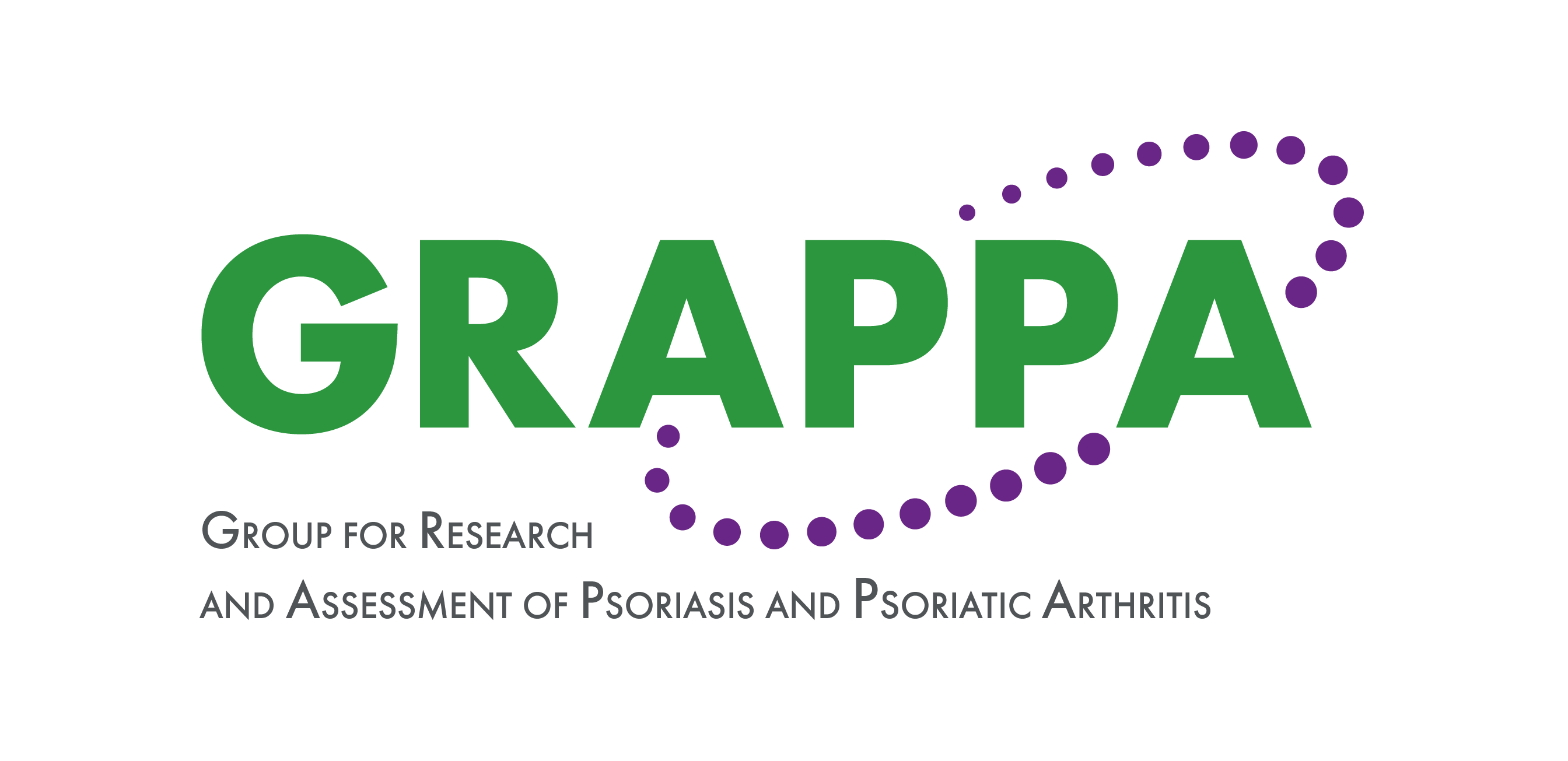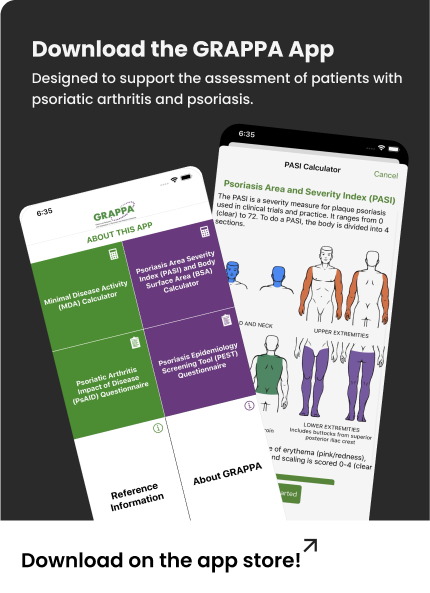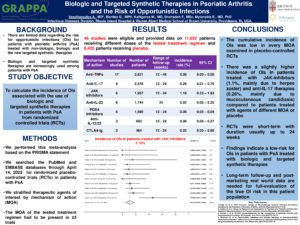Effectiveness And Factors Associated With Minimal Disease Activity In Upadacitinib-treated Psoriatic Arthritis Patients: 24-week Results Of A Real-life Multicenter Study (UPREAL-PsA)
Authors
Keywords
Psoriatic arthritis; upadacitinib; clinical efficacy; real life; psoriasis; peripheral arthritis; axial inflammation; minimal disease activity; bio-refractory; safety.
Background
Psoriatic arthritis (PsA) is an immune-mediated musculoskeletal disease characterized by clinical heterogeneous manifestations (disease domains). This clinical peculiarity makes difficult the therapeutic choice and the “optimal” therapy should be broad and effective on each clinical manifestation of the disease.
Objective
Upadacitinib (UPA) is a selective JAK inhibitor recently approved for the treatment of psoriatic arthritis (PsA), and thus there are no available data on its performance in real-world clinical practice. In this observational study (UPREAL-PsA), we evaluated UPA's real-life effectiveness and safety in a large multicentric cohort of patients with PsA.
Methods
One-hundred twenty-six (126) patients with PsA treated with UPA at 10 Italian centres were evaluated at baseline, week 12 (w12), and week 24 (w24) for clinimetrics, laboratory tests, and adverse events.
RESULTS
Among the enrolled patients, 124/126 (98%) had peripheral involvement and 54/126 (43%) had prevalent axial inflammation. Sixteen (13%) were refractory to conventional synthetic DMARDS, and 113 (87%) had been intolerant/refractory to one or more biologic DMARDs.
At baseline, patients showed high disease clinical activity (DAPSA 27.7±10.0; ASDAS-CRP 2.4±0.7), particularly women, and patients with polyarticular involvement, metabolic comorbidities, higher body-mass-index and elevated C reactive protein (CRP) (Table 1).
At w24, UPA significantly improved DAPSA, ASDAS, LEI, and PASI scores in 66 (52%) patients. MDA status was achieved in 47% of patients (Fig.1, Table 2, A-B).
An analysis of clinical responses in patient subgroups (Fig. 2, A-B) revealed that: i) normal CRP, oligoarticular and bio-naïve groups showed a rapid clinical improvement at week 12, maintaining the improved scores at week 24, while high CRP, polyarticular and bio-failure groups experienced a further significant improvement from week 12 to week 24; ii) patients with cardiovascular or metabolic comorbidities show improvement at week 12, which was maintained at week 24. iii) both female and male patients showed significant improvement at week 12 and continue to experience further significant improvement from week 12 to 24.
Finally, the multivariate logistic regression analysis demonstrated that male gender (OR 2.54, 95% CI 1.03-6.25 p=0.043), bio-naïve patients (OR 4.13, 95% CI 1.34-12.71, p=0.013), and patients with high baseline CRP levels (OR 2.49, 95% CI 1.02-6.12, p=0.046) had the highest probability of achieving MDA response at week 24.
UPA was discontinued in 13 (10%) patients for inefficacy or non-serious adverse events (AE). No life-threatening serious AE was observed during the 24-week follow up.
CONCLUSIONS
This is the first real-life study on the effectiveness of UPA in PsA patients, and we have confirmed its effectiveness and safety profile observed in Phase III trials. Importantly, we have identified clinical and demographic predictors of response to UPA at 6 months in real life, with the greatest UPA effectiveness shown in males, bio-naïve patients, and those with high baseline CRP.
Moreover, it is noteworthy that UPA in real life demonstrated consistent efficacy in patients with axial inflammation up to the 24-week follow up and in patients who could be considered difficult to treat, as those refractory to bDMARDs.


